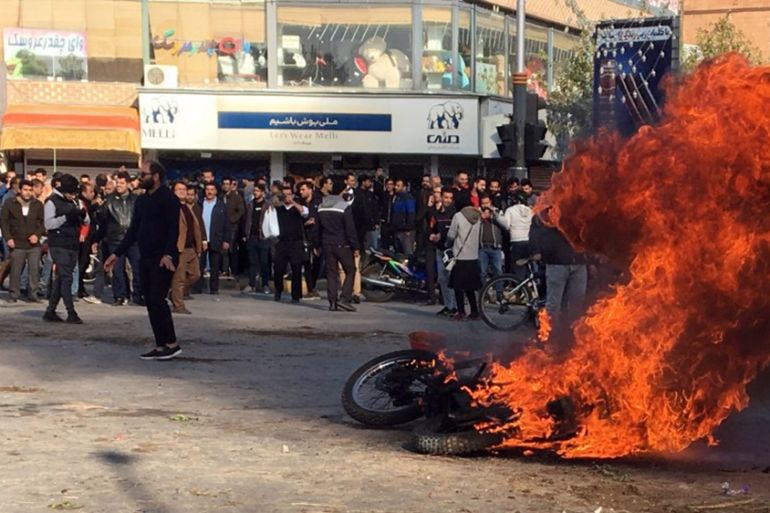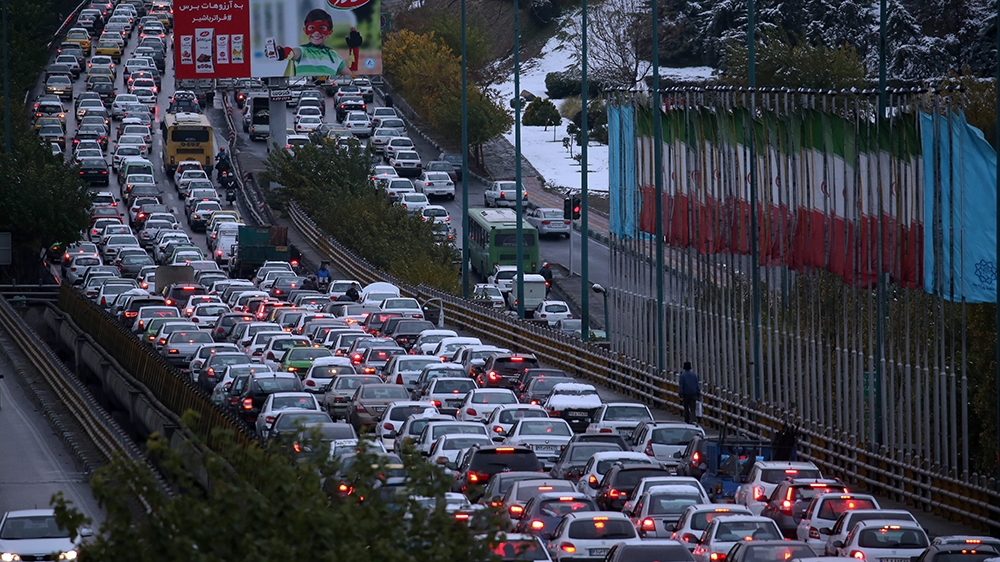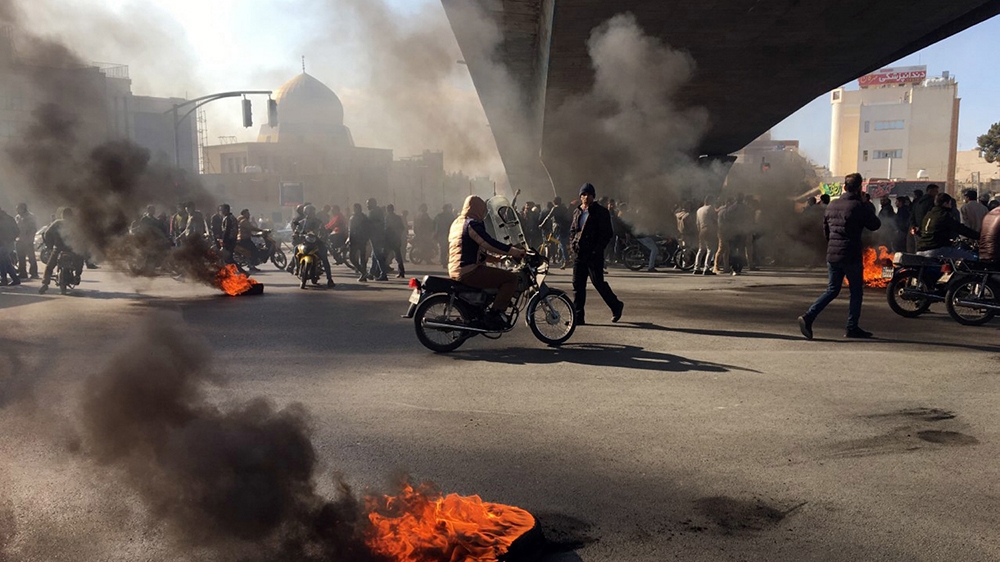Iran Supreme Leader Khamenei backs petrol price hike decision
Ayatollah Ali Khamenei blames enemies for ‘sabotage’ after protesters clash with security forces.

Iran‘s Supreme Leader Ayatollah Ali Khamenei has backed a decision to ration and increase the price of petrol by at least 50 percent, a move that has sparked protests across the country.
On Sunday, Khamenei also blamed opponents of the Islamic Republic and foreign enemies for “sabotage”, state television reported.
Keep reading
list of 3 itemsPetrol rationing and price hikes take Iranians by surprise
Iran: Europeans hypocrites for condemning steps away from deal
He described those setting fire to public property during the protests as “bandits” backed by the enemies of Iran, without elaborating.
“Some people are no doubt worried by this decision … but sabotage and arson is done by hooligans not our people. The counter-revolution and Iran’s enemies have always supported sabotage and breaches of security and continue to do so,” he said, according to state TV.
Khamenei said the increase in petrol prices was based on expert opinion and should be supported.
“I am not an expert and there are different opinions but I had said that if the heads of the three branches make a decision I will support it,” he was quoted as saying.
The price hike, part of efforts to offset the effect of crippling US sanctions, was agreed by the High Council of Economic Coordination, which consists of the president, the head of the judiciary and the parliament speaker.

Protests
The decision, introduced on Friday, was followed by overnight demonstrations that spilled into Saturday, when protesters blocked roads in cities and towns and occasionally clashed with police.
It remains to be seen how many people have been injured, killed and arrested as videos from the protests have shown people gravely wounded.
Iranian authorities on Sunday raised the official death toll in the violence surrounding the unrest to at least two. Attackers targeting a police station in Kermanshah on Saturday killed one officer there, the state-run IRNA news agency reported Sunday.
Earlier, one man was reported killed in the central city of Sirjan overnight on Friday.
|
|
Videos posted on social media purportedly showed protesters setting fire to buildings and clashing with riot police. In other videos, they appeared to block roads and set fires in the streets of the capital, Tehran, and some other cities.
State television said police clashed with what it called rioters in some cities and fired tear gas to disperse them.
Iranian Interior Minister Abdolreza Rahmani Fazli told state TV on Saturday that security forces “have so far shown restraint” but will act to restore calm if the demonstrators “damaged public properties”.
Khamenei’s remarks came as authorities shut down the Internet across Iran in a bid to smother the protests in some two dozen cities and towns.
Netblocks, an NGO monitoring internet censorship, said in a Twitter post late on Saturday that Iran is now “in the midst of a near-total national internet shutdown”.
Confirmed: #Iran is now in the midst of a near-total national internet shutdown; realtime network data show connectivity at 7% of ordinary levels after twelve hours of progressive network disconnections as public protests continue #IranProtests 📉
📰 https://t.co/1Al0DT8an1 pic.twitter.com/u6bVsfvOOm
— NetBlocks.org (@netblocks) November 16, 2019
Videos circulating on social media on Sunday showed demonstrators abandon their cars along major highways and join mass protests in Tehran and elsewhere.
Economic fears
According to Friday’s decision, vehicles for private use are to be restricted to 60 litres (16gal) of fuel monthly, while the price of petrol will jump 50 percent to 15,000 Iranian rials ($0.13) a litre. Any fuel purchases in excess of allotted rations will incur an additional charge of 30,000 rials ($0.26) a litre.
The moves prompted fears of households facing further economic pressure in a country whose economy is forecast to shrink by 9.5 percent this year.
Iranians, especially those getting by on low- and middle-income wages have already taken a massive hit due to a currency crisis and an inflationary wave that formed on the back of the sanctions imposed after US President Donald Trump last year unilaterally withdrew Washington from a landmark nuclear deal signed between world powers and Iran in 2015.
The demonstrations, though not as widespread as the economic protests that shook the country nearly two years ago, put new pressure on the government of Iran’s President Hassan Rouhani before parliamentary elections in February.
